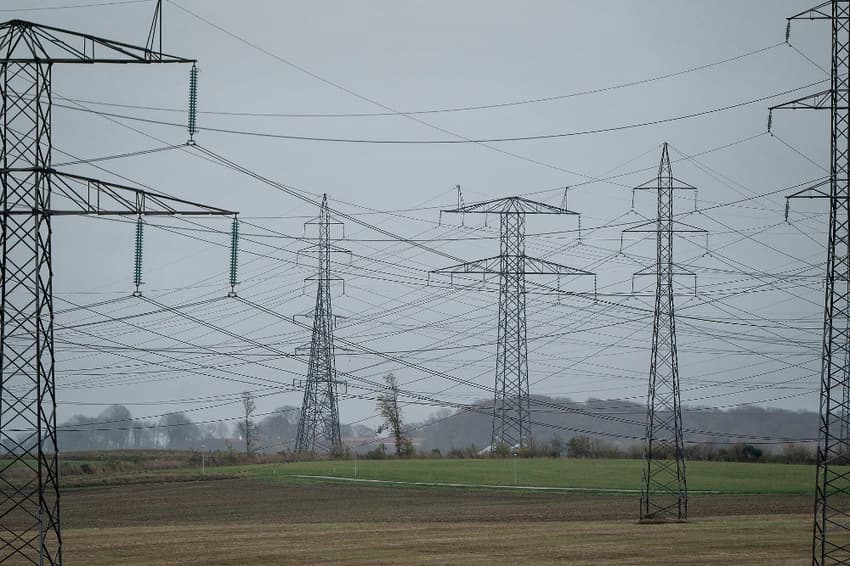Cheaper electricity on the way for 2.5 million Danish customers

Electricity customers in eastern parts of Denmark will soon see their bills reduced after energy grid operators agreed to reduce their tariffs from March 1st.
Two energy grid companies, Cerius and Radius Elnet, are to reduce their tariffs from March 1st. The two companies operate on Zealand and the smaller islands Lolland, Falster and Møn.
Tariffs were increased at the turn of the year because the companies said they had a backlog of additional costs from last year that they wished to trim.
Money raised from tariffs goes toward the cost of maintaining the electric grid and transporting energy to consumers.
An electricity bill accounts for tariffs, the raw electricity price, VAT and other taxes.
The average tariff for customers in Radius’s area — Copenhagen, North Zealand and parts of Central Zealand — should drop by 18 percent from March, while the rest of Zealand will see their tariffs fall an average of 20 percent.
READ ALSO: Danish regulator says electricity companies earn ‘excessive’ profits
“It was very sad in the autumn when we had to announce price increases but with the sudden high increases to the cost of electricity, there was no way around it,” head of operations Cäthe Juul Bay-Smidt of Cerius and Radius Elnet said.
“But as we clearly said at the time, and as we have said since, we intended to reduce prices again as soon as we saw a longer-term trend towards lower prices. That’s what we’re seeing now,” she said.
“And that means we will have lower costs and then we can put our prices down,” she said.
As many as 2.5 million customers on Zealand, Lolland, Falster, Møn and outlying smaller islands could feel the benefit of the lower tariffs.
A third energy grid company, Trefor, is also reported to be considering reducing tariffs. Trefor operates in the trekantsområde or “triangle region” encompassing areas in and around the towns of Vejle, Kolding and Fredericia.
No final decision has been taken by Trefor so far.
“We have considerations about hopefully being able to reduce prices around the time of the summer holiday. I don’t expect to be able to do it earlier,” director of infrastructure Charles Nielsen told news wire Ritzau.
“That is because we have a relatively large debt from last year and previous years that must be cut back,” he said.
Comments
See Also
Two energy grid companies, Cerius and Radius Elnet, are to reduce their tariffs from March 1st. The two companies operate on Zealand and the smaller islands Lolland, Falster and Møn.
Tariffs were increased at the turn of the year because the companies said they had a backlog of additional costs from last year that they wished to trim.
Money raised from tariffs goes toward the cost of maintaining the electric grid and transporting energy to consumers.
An electricity bill accounts for tariffs, the raw electricity price, VAT and other taxes.
The average tariff for customers in Radius’s area — Copenhagen, North Zealand and parts of Central Zealand — should drop by 18 percent from March, while the rest of Zealand will see their tariffs fall an average of 20 percent.
READ ALSO: Danish regulator says electricity companies earn ‘excessive’ profits
“It was very sad in the autumn when we had to announce price increases but with the sudden high increases to the cost of electricity, there was no way around it,” head of operations Cäthe Juul Bay-Smidt of Cerius and Radius Elnet said.
“But as we clearly said at the time, and as we have said since, we intended to reduce prices again as soon as we saw a longer-term trend towards lower prices. That’s what we’re seeing now,” she said.
“And that means we will have lower costs and then we can put our prices down,” she said.
As many as 2.5 million customers on Zealand, Lolland, Falster, Møn and outlying smaller islands could feel the benefit of the lower tariffs.
A third energy grid company, Trefor, is also reported to be considering reducing tariffs. Trefor operates in the trekantsområde or “triangle region” encompassing areas in and around the towns of Vejle, Kolding and Fredericia.
No final decision has been taken by Trefor so far.
“We have considerations about hopefully being able to reduce prices around the time of the summer holiday. I don’t expect to be able to do it earlier,” director of infrastructure Charles Nielsen told news wire Ritzau.
“That is because we have a relatively large debt from last year and previous years that must be cut back,” he said.
Join the conversation in our comments section below. Share your own views and experience and if you have a question or suggestion for our journalists then email us at [email protected].
Please keep comments civil, constructive and on topic – and make sure to read our terms of use before getting involved.
Please log in here to leave a comment.